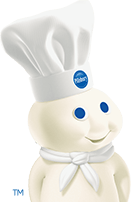Tips,Tricks, & Ideas

Aluminum pans reflect heat away from the cake and give it a tender, light-brown crust. Dark pans can cause cakes to have a thick, dark crust.
As tempting as it can be, be sure to use the exact-size pan thats listed in the recipe. Otherwise, baking time and temp will be off, and your cake might be over- or under-baked.
Don't substitute butter and flour for baking spray, or vice versa. Check to see if the recipe specifies how far up the pan you should grease.
This helps makes sure that every inch of the oven is all the way up to temperature when your cake goes in.
The absolute best way to measure ingredients is by weight using a food scale.
Pay close attention to how much the recipe says to beat the batter. An over- or under-beaten batter can cause a cake not to rise correctly or can create an unpleasant texture.
Overfilling pans can cause cakes to overflow or fall in the middle.
If you're baking more than one pan at a time, make sure there is enough space between them for the heat to circulate.
A warm cake is much more likely to crumble or fall.
If you're baking for a group, here's a handy guide for knowing what size cake will serve the whole crowd.
| Size of Cake | Serves |
| 8- or 9-inch square cake | 6 to 9 |
| 8- or 9-inch layer cake | 12 to 16 |
| 13x9-inch rectangular cake | 12 to 16 |
| 10x4-inch tube cake | 16 to 20 |
| 12-cup Bundt® cake* | 16 to 20 |
* Bundt® is a registered trademark of Northland Aluminum Products, Inc.
Check for doneness at the minimum baking time. Then check at one-minute intervals until the cake is done. Cakes are done when a toothpick inserted in the center comes out clean, and when the top is rounded, smooth, and springs back when lightly touched in the center.

Want to brush up your Vocabulary? Refer to our Baker's Glossary